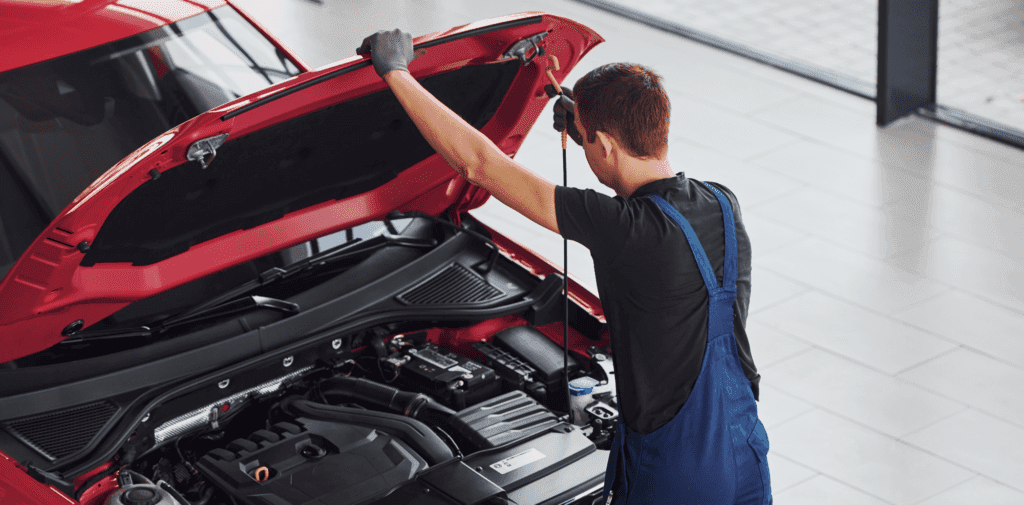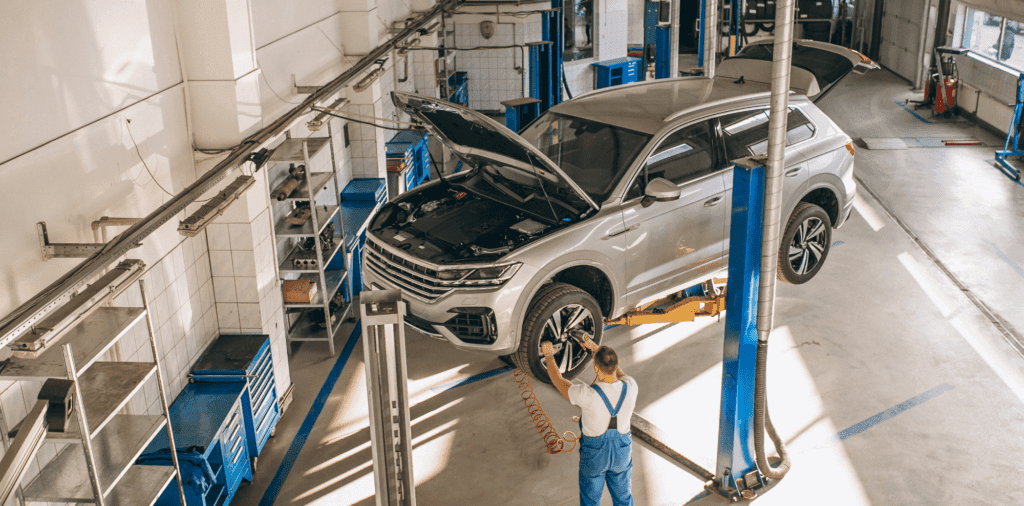
Once you’ve successfully navigated the journey of learning to drive and passing your test, you’ll find yourself faced with the ongoing duties that come with car ownership.
These include ensuring your fuel tank is adequately filled, managing your insurance, keeping up with regular services, and of course, preparing for the MOT.
What is an MOT?
An MOT is a mandatory annual inspection that ensures your vehicle adheres to the minimum safety standards required for roads.
Emission Checks
During an MOT, the inspection includes a thorough review of your vehicle’s exhaust emissions. This involves measuring levels of carbon dioxide, hydrocarbons, and carbon monoxide. If the emissions exceed the allowed limits, your vehicle will not pass the MOT.

How will I know when my car needs an MOT?
Timing of Your MOT
Your vehicle requires an MOT every 12 months after it becomes three years old. This annual check is essential to ensure your vehicle adheres to the required safety standards.
Checking Your MOT Date
If you’re uncertain about the last MOT date or have misplaced the details, there’s a straightforward solution. Simply visit the GOV.UK website to check your vehicle’s MOT history and find out when it’s due next.
What’s checked during an MOT?
Overall Vehicle Condition
The MOT begins with an inspection of the vehicle’s general condition, checking for excessive damage that might affect its safety or environmental impact.

Key Components
The check encompasses several critical areas:
- Fuel and exhaust systems to ensure they’re functioning correctly and not emitting harmful levels of pollutants.
- Doors must open and close properly, providing safe entry and exit.
- Seats and mirrors are assessed for security and proper adjustment.
- The braking system, tyres, and wheels are examined for wear and functionality.
- Lights, including headlights, indicators, and brake lights, must be in good working order.
- The bonnet must latch securely.
- Windscreen, horn, and wipers/washers are checked for effectiveness and condition.
- Finally, the steering and suspension and electrical components are evaluated to ensure they meet safety standards.
What is tested on MOT checks?
Your vehicle’s front, rear, brake, fog, indicator and registration plate lights and rear reflectors must:
- Be correctly positioned
- Secure
- Not be obscured
- Be in good condition
- Show the correct colour (a bluish tinge to front headlights is acceptable as long as the predominant colour is white)
- Not be adversely affected by the operation of any other light
- Illuminate with a single operation of the switch
Pairs of lights must emit light of the same colour, size and shape and headlight aim (both dip beam and main beam) should be below the horizontal, so as not to dazzle other drivers.
Horn
The horn must emit a continuous uniform note and must be loud enough to be heard by another road user.
Battery
The battery must be secure and not show any signs of leaking electrolytes.
Electrical wiring
Wiring should be secure and must not be damaged to the point where it is likely to short circuit or become detached.
Towbars
Any electrical socket must be in a good condition and correctly operate the trailer parking lights, brake lights, indicators and rear fog lights.
30% of all MOT faults relate to lighting and signalling
Steering
Your steering wheel must be secure and in a good condition. Expert technician’s will check this by pushing the wheel in various directions and inspecting the steering components for wear or damage.
If your steering has a locking device, it should only lock when the engine isn’t running.
Vehicles with power steering must have at least the minimum level of power steering fluid in the reservoir.
Suspension
Suspension components and shock absorbers will be checked for excessive corrosion, distortion and fractures.
Your brakes, pedals and levers should be in good condition and any relevant warning lights must work.
Expert technician’s will also carry out a brake performance test to check brake efficiency.
9.6% of MOT fails are due to brake issues
Your tyres must be of an appropriate speed and load rating for your vehicle and tread depth needs to be at least 1.6mm.
Expert technician’s will check for:
- Cuts in excess of 25mm
- Lumps
- Bulges
- Tears
- Exposure of the cord and tread separation.
For vehicles with run-flat tyres, the warning light must operate correctly.
Road wheels must be in good general condition, and all wheel nuts should be in place and tightly secured.
10% of all MOT faults are related to tyres
All your seat belts (including the attachment and adjustment fittings) need to be the correct length and in good working order.
Body
A general inspection of the body, chassis, engine mountings, seats, bonnet, boot and doors will be checked making sure all components are free from excessive corrosion with no sharp edges that might cause injury.
Registration plates
These must be secure and clearly legible to someone standing 20 metres away from the car and fitted to the front and rear of the vehicle, all characters must be correctly formed and spaced so they are not misread.
Clean your number plates and make sure they’re legible and legal.
Vehicle Identification Number (VIN)
Every vehicle must permanently display a legible VIN, either on a VIN plate secured to the vehicle, or stamped or etched on the body or chassis.
Speedometer
A speedometer must be fitted, and expert technician’s will check that it can be illuminated. It doesn’t matter if the dial glass is cracked as long as the speed can be read.
Check that your speedometer can be read and the dashboard lights illuminate at night.
Exhaust system
Your exhaust system should be secure and free of leaks. If your vehicle was originally fitted with a catalytic converter, it must still be present.
Make a note of any noise or rattling from the direction of your exhaust pipe when your car’s running, this could suggest a problem that needs addressing before you take your MOT.
Emissions
Your vehicle’s carbon monoxide and hydrocarbon emissions must fall within the legal limit.
Expert technician’s will use a gas analyser probe while the engine is running to test the smoke emitted from the exhaust.
They’ll also visually check for excessive smoke of any colour being emitted from the exhaust, which could result in an MOT failure.
Your vehicle will need sufficient engine oil and fuel levels for the technician to carry out their emission checks.
Be sure to top up your engine oil and fuel before your test. Your oil level should be between the minimum and maximum marks on the dipstick in the oil reservoir under your bonnet.
Mirrors
Rear view mirrors and wing mirrors must be secure and provide adequate views to the rear and side of the vehicle.
Check for cracks in the windscreen or mirrors that might obscure your view of the road.
Windscreen and Wipers
In the area of the windscreen directly in front of the driver, there must not be any damage or obstruction to the view larger than 10mm.
Give your wiper blades a once-over to ensure they’re in good working order and aren’t showing any signs of damage.
Outside this area (but within the swept area), there must not be any damage or other obstruction larger than 40mm.
Check screen wash levels and top up if needed.
Wipers and washers must sweep a wide enough area to give the driver an adequate view of the road.
6.6% of MOT fails are due to issues with the driver’s view of the road
Frequently asked questions
An MOT (Ministry of Transport test) is an annual test for vehicle safety, roadworthiness, and exhaust emissions required in the UK for most vehicles over three years old.
An MOT ensures your:
- Vehicle is safe to drive
- Meets environmental standards
- Complies with the law
It helps prevent accidents and reduces harmful emissions.
Yes, you will. Our best advice, though, is to stay on top of your maintenance throughout the year. This way, you can sidestep the hassle of tackling a lengthy to-do list just before your MOT.
If your car fails its MOT due to any dangerous or major faults, it cannot be driven until these faults are fixed.
Yes, electric vehicles also require an MOT every 12 months. The key difference is that they are exempt from emissions tests.
Should your vehicle fail its MOT and you opt to have it repaired at the test centre, you’ll be eligible for a partial re-test.
If the repairs are completed within 10 working days following the fail, this re-test should be free.
Driving a vehicle that has been classified as dangerous following a failed MOT could result in a fine of up to £2,500, alongside a potential driving ban.
An MOT checks numerous components, including:
- Lights
- Tyres
- Brakes
- Steering
- Suspension
- Exhaust system
- Seat belts
- Windscreen wipers
Yes, all lights are inspected, including:
- Headlights
- Tail lights
- Indicators
- Brake lights
- Number plate lights
to ensure they are working correctly and are correctly positioned.
Yes, the tyres are checked for:
- Tread depth
- Condition
- Correct size and type for the vehicle
They must meet the minimum legal tread depth of 1.6mm.
Yes, the brakes are tested for efficiency, condition, and performance, including the brake pads, discs, and fluid levels.
Both steering and suspension systems are inspected to ensure they are in good working order and there are no issues affecting vehicle control or stability.
Yes, all seat belts are checked for condition, operation, and security, ensuring they function correctly and are free from damage.
Yes, the exhaust system is inspected for leaks, noise, and to ensure it meets emission standards.
Yes, the windscreen is checked for damage and the wipers are tested to ensure they clear the screen effectively.
The bodywork is inspected for corrosion, sharp edges, and any other defects that might cause injury or affect the vehicle’s safety.
Yes, all mirrors are checked to ensure they are secure, adjustable, and provide adequate rear visibility.
Yes, the horn is tested to ensure it is loud enough to be heard by other road users.
Common reasons include issues with lights, tyres, brakes, suspension, and emissions. It’s essential to maintain these parts regularly.



